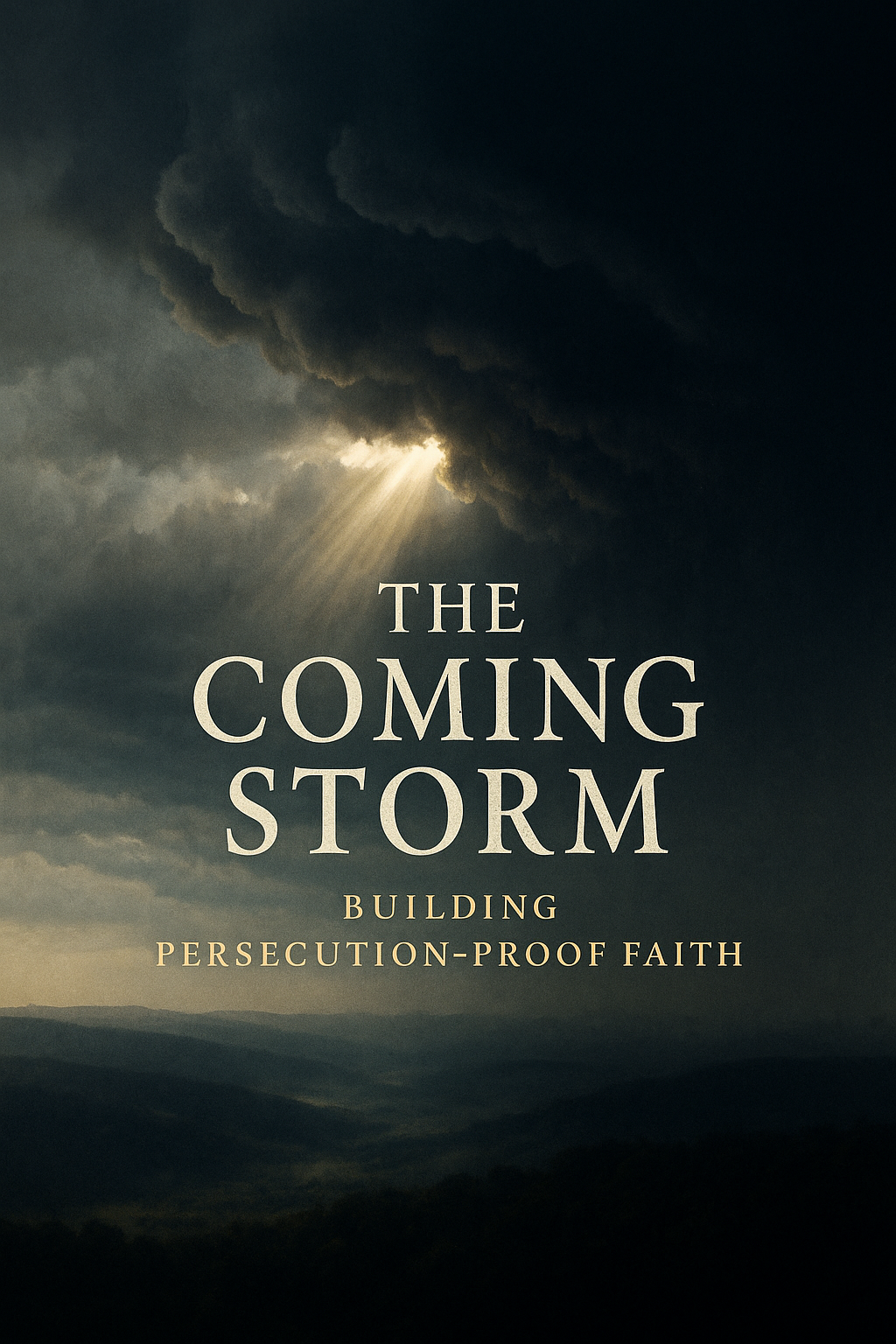The Church in the West stands at a crossroads. Cultural hostility toward biblical truth grows louder by the day, while many believers remain unprepared for what Scripture has always promised — that following Christ will invite opposition. Yet the answer is not panic or fear. It is rediscovering the kind of hope that produces endurance — a hope rooted not in politics, comfort, or optimism, but in the return of Christ.
These ten truths outline what it means to live with eschatological sanctification — the process by which our future hope strengthens holiness and endurance today.
1. Persecution Is Inevitable for Faithful Christians, Yet Most Are Unprepared for It
Jesus didn’t hide the cost of discipleship. He said, “If they persecuted Me, they will persecute you also” (John 15:20). For centuries, this was considered normal Christianity. But modern believers have grown accustomed to comfort and cultural approval. When the winds shift, a shallow faith collapses. Preparation for persecution begins with acknowledging its certainty — not as misfortune, but as participation in Christ’s sufferings.
2. We Are Called to Endure Suffering Because We Belong to Christ
Persecution is not punishment; it’s proof of belonging. Paul told Timothy, “All who desire to live godly in Christ Jesus will be persecuted” (2 Tim 3:12). The world’s rejection reminds believers that our citizenship is in heaven, not here. True discipleship embraces the cross before it seeks the crown.
3. The Blessed Hope of Christ’s Return Fuels Present Strength and Joy
Titus 2:13 calls the return of Christ our “blessed hope.” That hope is not escapist; it’s empowering. Knowing that Jesus will appear again gives believers courage to face hardship, perseverance to stay faithful, and joy even in sorrow. Eschatological hope doesn’t remove suffering — it redeems it.
4. Modern Christianity Often Misunderstands Eschatology and Sanctification
When people hear “eschatology,” they picture prophecy charts and timelines. When they hear “sanctification,” they think of moral improvement. Both are incomplete. Eschatology is not trivia about the end; it’s the framework for endurance. Sanctification is not just self-discipline; it’s the Spirit’s work of shaping holy character in light of eternity. The two belong together.
5. Eschatological Sanctification Unites Future Hope with Present Holiness
The term may sound academic, but the reality is profoundly practical. Eschatological sanctification is the Spirit-empowered process through which the believer’s growth in holiness is shaped by the coming return of Christ. It reorients the believer’s focus from fear and distraction to the person of Jesus Himself. When the Church fixes its eyes on Christ’s appearing, it learns to live faithfully in a hostile age.
6. This Work Is Both Personal and Communal
Eschatological sanctification isn’t an individual survival plan. It’s a shared calling. Throughout Scripture, believers endure together — praying, worshiping, and strengthening one another. Isolation weakens; unity fortifies. A church that suffers together stands together.
7. The Spirit and Spiritual Disciplines Train the Church for Endurance
Preparation for persecution begins before the storm hits. Through prayer, worship, Scripture, and obedience, the Holy Spirit forms endurance within believers. These disciplines aren’t religious routines — they are the training ground of saints who will stand when others fall. Spiritual formation today is persecution preparation for tomorrow.
8. The Ordinances Anchor Us in Hope
Baptism and the Lord’s Supper are not mere symbols of past grace; they proclaim future glory. Baptism identifies believers with the death and resurrection of Christ — a public declaration that life and death belong to Him. Communion proclaims “the Lord’s death until He comes” (1 Cor 11:26). Every time the Church gathers at the table, it rehearses for eternity.
9. Neglecting Eschatological Truth Leads to Doctrinal Drift
When the Church forgets Christ’s return, it drifts toward comfort and compromise. The focus shifts from faithfulness to success, from holiness to happiness, from conviction to consensus. Cultural pressure then does what persecution never could — it silences conviction. The remedy is not cultural withdrawal but theological clarity — a church anchored in the hope of His appearing.
10. Eschatological Hope Produces Mission, Not Escape
The blessed hope is not an excuse to disengage from the world; it is fuel for the mission. The apostles preached and suffered because they believed the return of Christ was near. The Church that lives in light of His coming becomes courageous, compassionate, and urgent. The outcome of eschatological sanctification is a sanctified, courageous, hope-filled Church that reflects Christ’s character while awaiting His return.
Conclusion: Hope That Holds in the Storm
The days ahead may test the Church in ways we’ve not experienced in generations. But fear has no place in the heart fixed on Christ’s return. The same hope that sustained the martyrs, missionaries, and reformers is the hope that sanctifies the modern believer.
Eschatological sanctification is not theory — it is survival theology. It’s how ordinary saints develop extraordinary endurance. It’s how the Church shines brightest when the world grows darkest.
So lift your eyes. The storm may be near, but so is the King.
